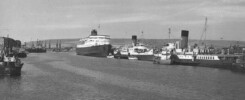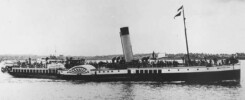
After his brave but ultimately unsuccessful attempts to run the paddle steamer Consul on the Sussex Coast and Thames in 1963 and from Weymouth in 1964 the young Mr A M C “Tony” McGinnity, then still in his mid twenties, set himself up as a shipbroker, ship delivery contractor, marine surveyor and consultant from a tiny office in Winchester House, Maiden street, Weymouth. From there, amongst many other things, he was involved in the sales of most of the UK paddle steamers in the late 1960s and early 1970s during which time he lobbied hard to find future roles for them either operationally or statically as, one by one, they were withdrawn.
This is his flyer for the sale of the Princess Elizabeth for which he had a joint agency with that other famous shipbroker H E Moss. She could have been yours then “with prompt delivery” for a mere £7,500.
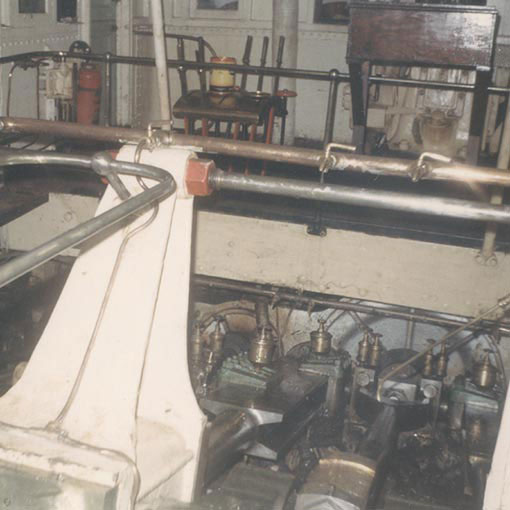
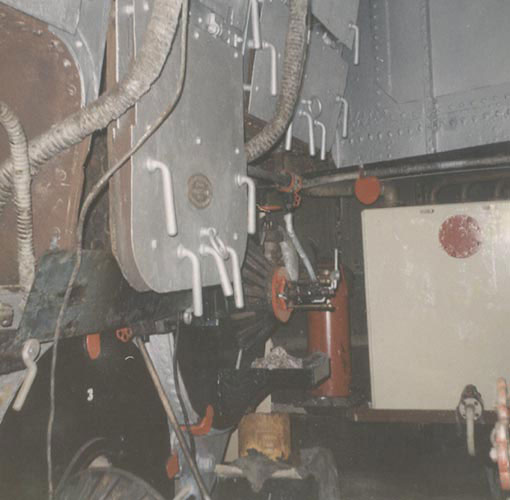
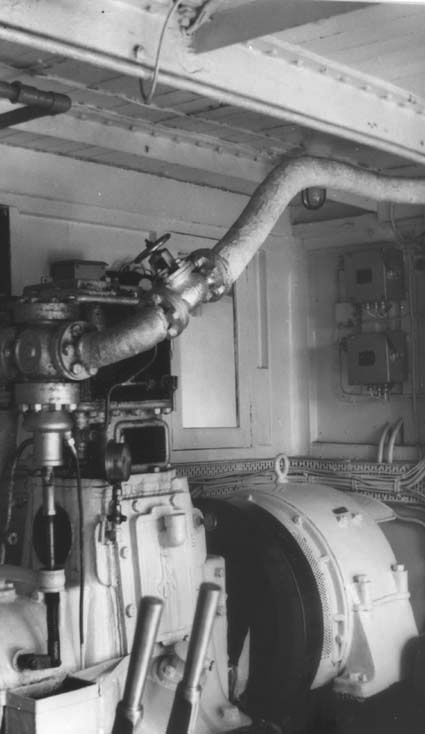
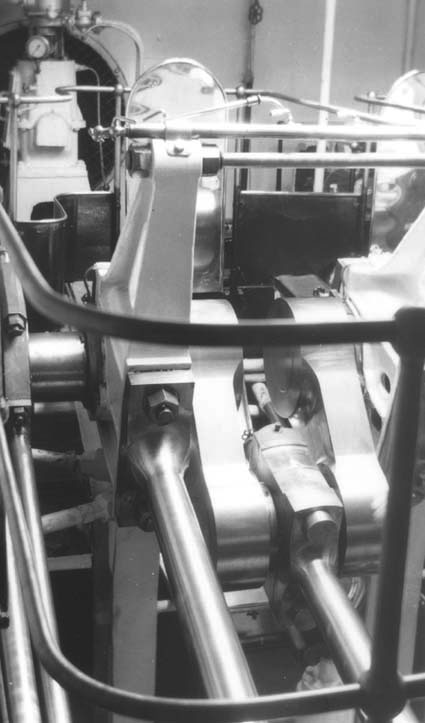
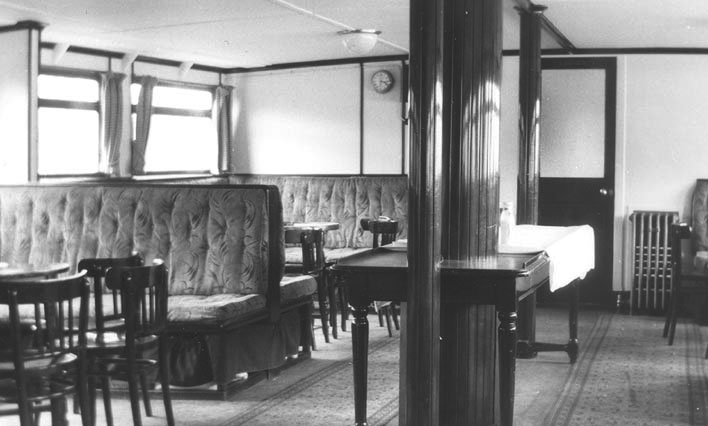

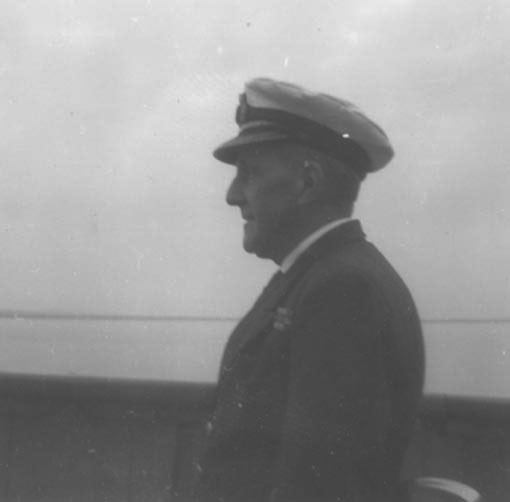
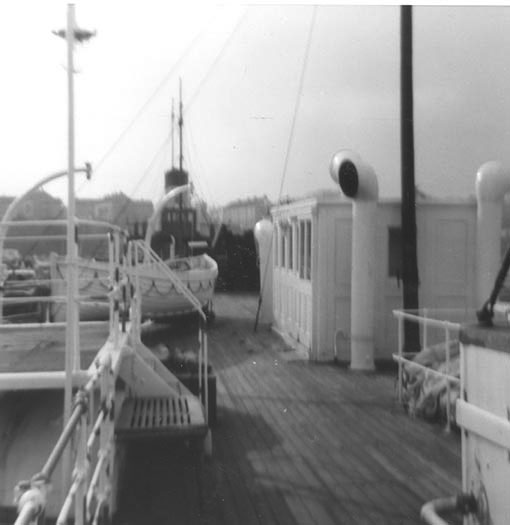
The newly recruited team spent the winter of 1966/67 pottering about aboard doing all manner of largely cosmetic things. The lavatories were painted throughout. The aft salon was freshened up with a lick of paint and each Friday afternoon they scrubbed a little bit of deck around the bottom of the main companionway up to the promenade deck. On fine days they emerged into the open to titivate this and that including painting the previously varnished deck house seen in this picture (which also shows the Embassy astern) white. Perhaps the best thing which they did was to start to paint the hull above the waterline aft of the paddles with a silver coloured anti-corrosive paint.
The new owner, Mr Render, was not down often but on one of his visits to Weymouth he popped into the Swan Inn in St Thomas Street, Weymouth, not far from where the Lizzie was berthed, to have a gin and tonic. There he found that the landlord, Bob Wills, was a former engineer from Cosens’s paddle steamers and was also the owner of the 50 passenger launch Topaz and the 150 passenger vessel Weymouth Belle which had taken over the Lizzie’s local trade. Bob was a lovely man who was a great help to me in my youth but he could be direct in his views and he told Mr Render that he thought that there was too much tea being drunk and too many war stories being swapped aboard the Lizzie and that nothing of what the ship really needed was being done.
As a result a Board of Trade surveyor was brought in and he started going round the ship with a hammer bashing holes in the steelwork and asking for bits of deck over the boiler room to be taken up to see what was underneath. As if that was not enough he presented a catalogue of defects and new requirements particularly in relation to completely redoing all the fire-proofing in and around the stokehold. Big bucks were going to be needed to put all that straight.
Later on the same day I popped aboard on my way home from school, as I often did, and found Capt Defrates sitting down in the aft saloon still wearing his old paint stained captain’s hat looking thoroughly depressed, deflated and down. They had all been sacked and the Lizzie was to be put up for sale again. Mr Render was off. He had had enough. He would forge his longed for casino some other way.
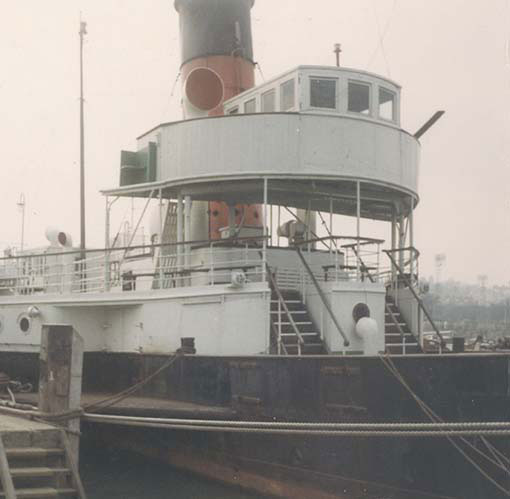
After that the Lizzie continued to lie in the same berth gradually going ever more downhill and defying all attempts to find a new role for her. Then in the late summer of 1967 she was sold for scrap.
On the morning of Friday 20th October 1967 she was singled up ready to be towed out through the Town Bridge but unfortunately the head rope was removed allowing the bow to swing out and the stern to swing in as the tide started to fall which meant that the aft part of her starboard sponson floated over the quay wall between the riding posts which were supposed to prevent that. As the tide went down the sponson became stuck fast on top of the quay and the Lizzie gradually took on an ever increasing list to port as the tide ran away from her. Tony McGinnity noticed this and called in Bob Wills who hijacked a large telegraph style pole lying nearby, attached a rope to one end of it and, with assistance from other passers-by, managed to get it inserted between the Lizzie and the quay wall. The group was instructed to grab hold of the rope and haul on it for all that they were worth thereby using the pole as a sort of lever to prize the ship off the quay. The final instruction clearly sent out by Bob was “when she comes off, let go the rope and run like hell.” All this they did. It worked and the Lizzie slid off. Splash!
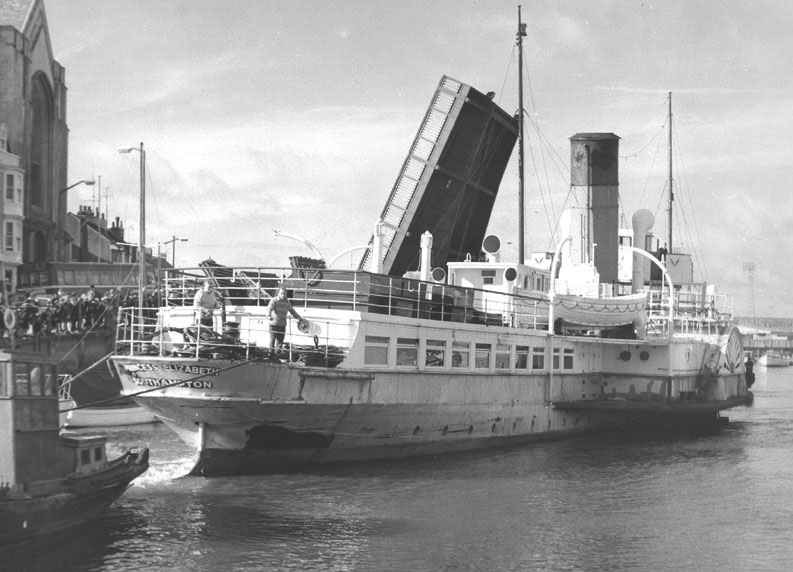
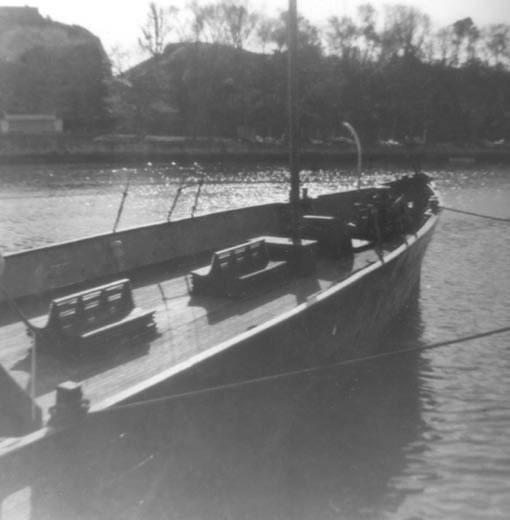
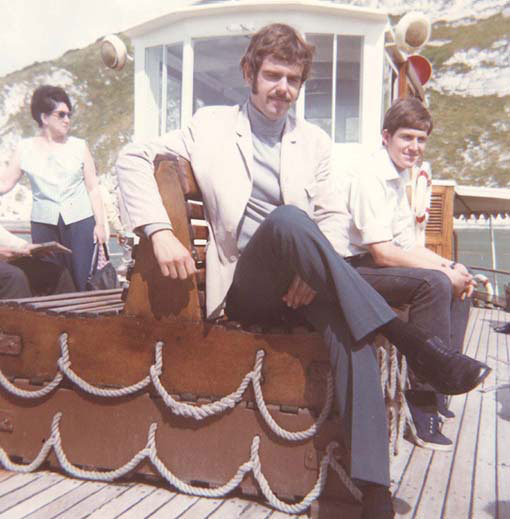
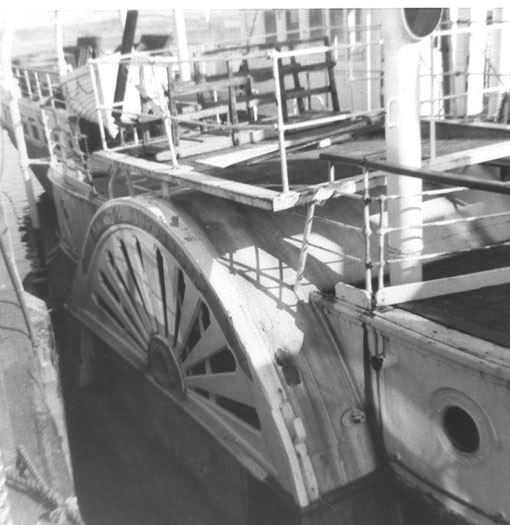
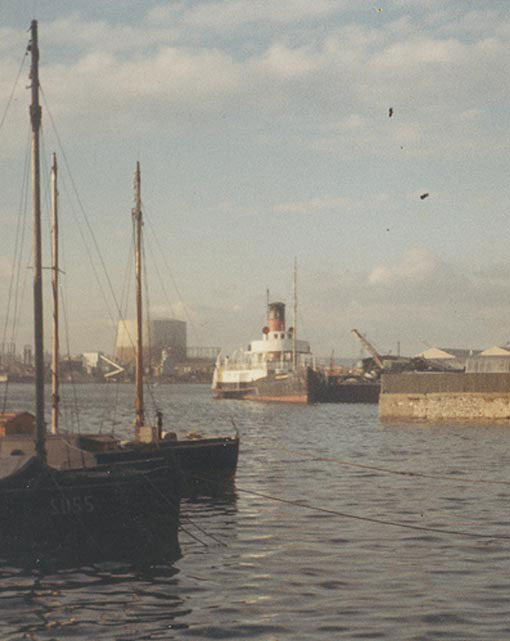
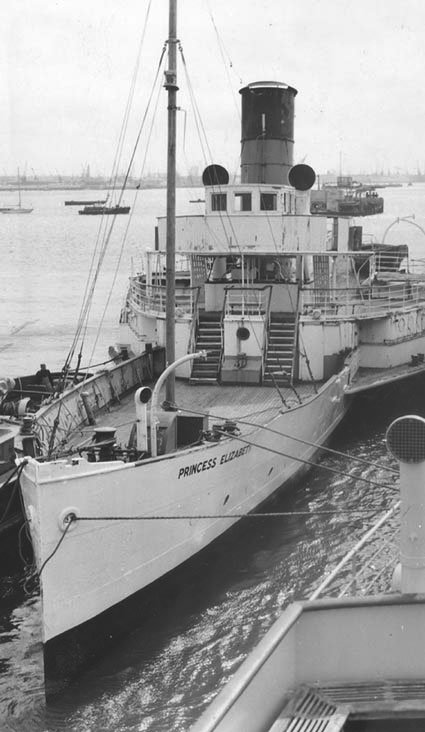
There can’t have been many ships which have entered a scrap-yard and have re-emerged again for new lives elsewhere but this is exactly what happened to the Lizzie. Mr Harold Butler thought that she would make an ideal centre piece and headquarters for a sailing club for a new half a million pound proposed marina development at Hayling Island so he bought her from the scrap-yard and had her moved to Husbands Yard at Marchwood on 11th April 1968 for attention. Here she is at Husband’s after a wash and brush up of the hull in a picture taken from the bridge of the Balmoral which was there at the same time.
However things did not run smoothly for Mr Butler’s plans. The Lizzie was moved to Hayling Island but in September Havant councillors denied planning permission saying that the ship would “look out of place” which rather knocked things on the head.
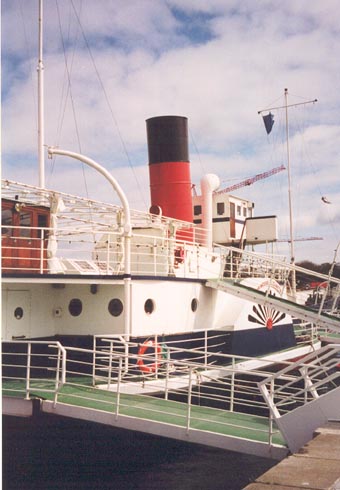
Little more than a year later she was sold again this time to Mr Don Hickman who had her towed round to London for use as a restaurant and bar on the Thames near London Bridge. In 1987 she was towed to Paris to fulfil a similar role and in 1999 to Dunkirk (pictured above) where she remains to this day.
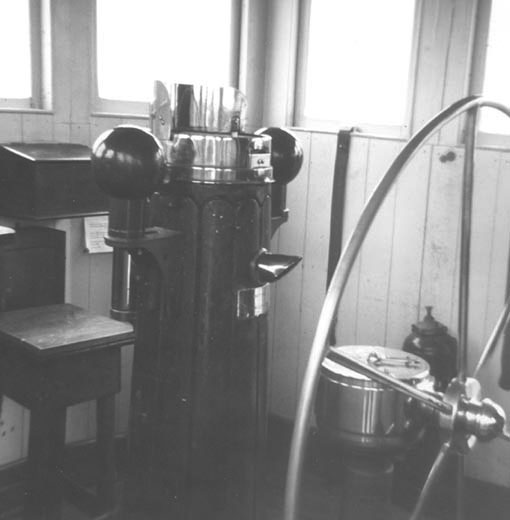
Although the Lizzie is now in foreign parts one little bit of her remains in the UK. Mrs Eileen Pritchard, PSPS member number 1 and for many years secretary of the Wessex Branch, bought the Lizzie’s lovely brass steering wheel from the scrap-yard in 1968 and, after many years on display at Southampton, it is now in the PSPS collection of paddle steamer stuff at Chatham.
Tony McGinnity continued his business as a shipbroker, ship delivery contractor, marine surveyor and consultant adding a directorship of P & A Campbell Ltd to his portfolio in the mid 1970s. I last saw him at a dinner of the Worshipful Company of Shipwrights in London in 2008. He told me then that he was booked to go into hospital for a fairly routine operation from which I was very sad to hear that he did not recover.
Kingswear Castle returned to service in 2023 after the first part of a major rebuild which is designed to set her up for the next 25 years running on the River Dart. The Paddle Steamer Kingswear Castle Trust is now fund raising for the second phase of the rebuild. You can read more about the rebuilds and how you can help if you can here.
John Megoran

